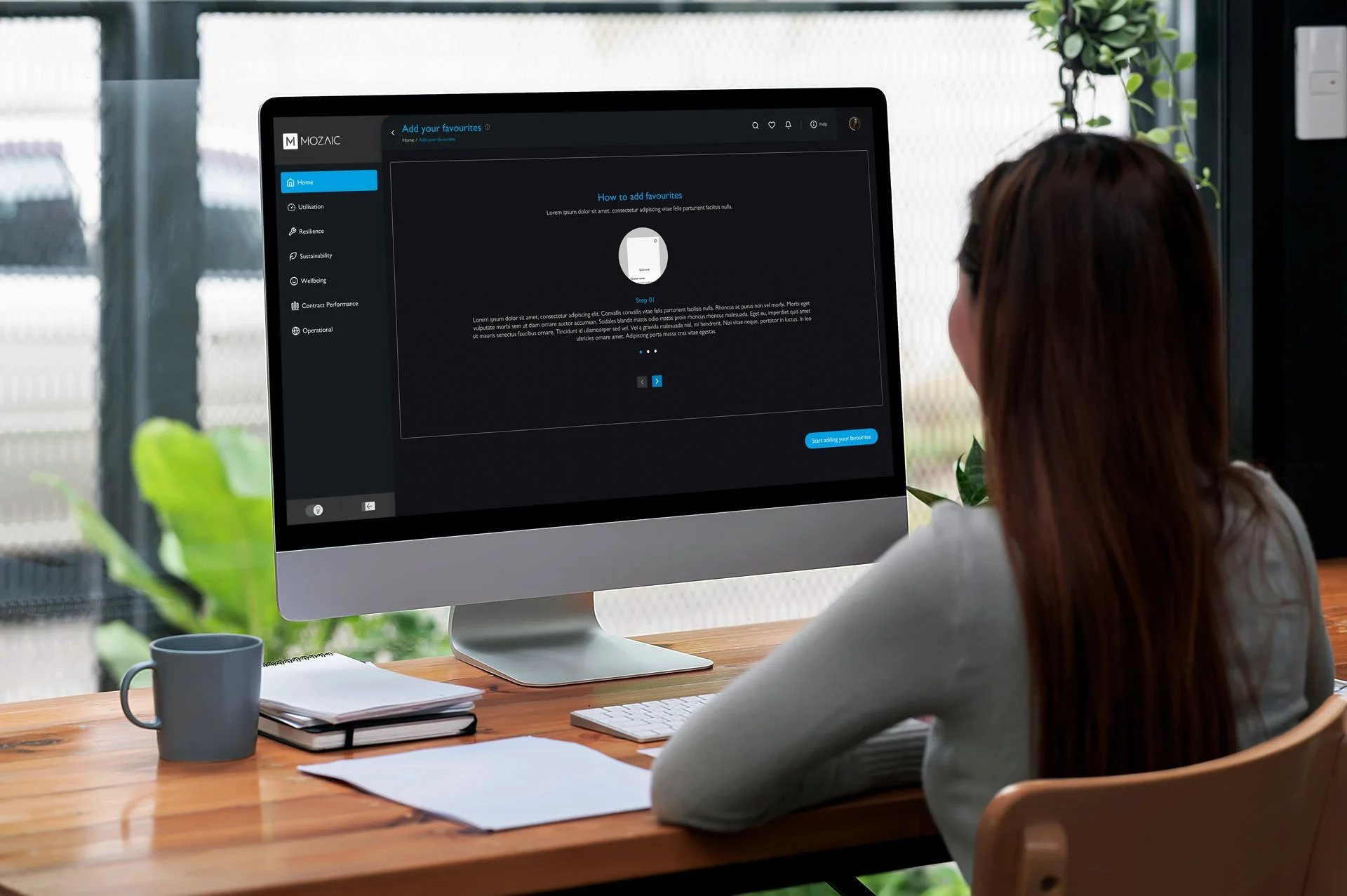Mozaik-Responsive platform
Mitie’s award-winning analytics and reporting portal. Mozaic brings together data from across your estate through real-time dashboards and reports, which can be searched and filtered to provide customised views. With key metrics highlighted automatically, Mozaic is designed to drive better-informed, more strategic decision-making in all aspects of your facilities management.
Lead user experience and Interface
As the Lead UX/UI designer, I was responsible for the entire process, from taking the brief and running workshops to conducting research, designing, and testing and handover.
Project Overview:
The collaborative initiative aimed at transforming Mozaic into a more intuitive and effective tool for Mitie's existing and potential clients. The primary objectives were to simplify and optimize the user experience (UX) and user interface (UI) of the current platform, aligning them with the evolving needs of the facilities management landscape.
Challenges and Objectives:
The main challenges were to simplify the user experience and optimize the user interface of Mozaic. Our goal was to align the platform with the evolving needs of the facilities management landscape, addressing issues such as complex navigation and cognitive overload.
Team Structure
This diverse team synergised expertise to ensure a holistic and user-centric approach throughout the design process.
Lead UX/UI Designer (Myself)
Midweight UI Designer
4 Software Engineers
Microsoft Power BI Engineer
Product Owner
Project Manager
Understanding the problem
To gain a profound understanding of Mitie's requirements, we conducted in-depth sessions with various Mitie departments. Additionally, we analysed 96 hours of user interviews and testing data from the current platform. Then we conducted a series of Workshops, including discovery and empathy workshops, providing insights into business objectives and user needs, laying the groundwork for our design endeavors.
We conducted in-depth sessions with various Mitie departments and analyzed 96 hours of user interviews and testing data. Discovery and empathy workshops provided insights into business objectives and user needs, forming the foundation of our design efforts.
Research and Understanding
We engaged with 10 users through interviews, observation, and surveys. Key pain points identified included:
Difficulty navigating the information architecture.
Inability to favorite sections buried under multiple levels.
Cognitive overload is caused by the data visualization and IA.
Heuristic Evaluation: Using Nirman standards, we found the current design to be over-cluttered, lacking the flexibility of control, and having low error prevention.
Our research phase encompassed diverse UX research methodologies, such as interviews, observation, and surveys. Card sorting elucidated the logical structure of the information architecture, and first-click testing with Mitie's current platform helped identify navigation issues. Usability testing involved one-to-one interviews with existing Moziac users, allowing us to observe and analyze their interactions.
Heuristic evaluation against industry standards provided a comprehensive assessment of the current Moziac platform, highlighting areas for improvement.
The user needs…
User Stories & Personas
Based on the amalgamation of interviews, workshops, and user research, I crafted three personas representing distinct user profiles. Each persona encapsulated realistic user goals and points of pain, informing design decisions throughout the development process.
Navigation and findability
Help use the experience and find things easily and intuitively
A lack of personalisation across the experience
Be confident the service recognises me and can get to know me even better
Clarity, availability, revealing and recognition of information
I can get into things deeper or even just dip easily into an area of interest
Contextuality
Really understanding the situation I’m in and providing me with the things I need at any given time
The principles of findability, flexibility, ease of use, and simplicity guided our design decisions. This led us to reconsider the information architecture, create educational tools, and add features like shortcuts and the ability to favorite sections.
Client’s Review
It was good to see so many idea and thoughts being given by the team
•
loved Idea validation and the initial get to know me session
•
It was good to see so many idea and thoughts being given by the team
•
It was good to see so many idea and thoughts being given by the team • loved Idea validation and the initial get to know me session • It was good to see so many idea and thoughts being given by the team •
Wireframes & Prototyping
Using Figma, we developed two iterations of wireframes and prototypes. Feedback was gathered through discussions with Mitie stakeholders and by analyzing user testing results.
The conceptualization phase involved transforming insights from our research and workshops into tangible designs for the Mozaic platform.
This iterative process facilitated continuous user testing and refinement, ensuring the final product met the needs and expectations of Mozaic's users.
Collaboration
Effective communication and collaboration were ensured through series of standups and parking lot sessions. We worked closely with software engineers, the Power BI engineer, the product owner, and the project manager, conducting iterative design sessions for data visualization.
We used Figma and XD for the design handoff, supported by multiple QA sessions to ensure the final implementation matched the design specifications.
Testing and Feedback
Conducted remotely, we held two testing sessions. Insights included a preference for grouped search and favorites, with 80% of users favoring this approach.
Feedback was gathered from user testing videos, interviews, and card sorting exercises. One significant change was the implementation of a dark mode, preferred by 65% of users for easier data viewing.
Design System and User interface
Establishing the Mitie Canvas Design System (MDX) marked a pivotal phase. MDX served as the digital fabric for planning, creating, and building Mitie's digital products. It introduced guiding principles and UI design elements, forming the bedrock of the future Mitie Design System.
This framework ensured consistency, simplicity, and scalability across Mitie's digital interfaces, fostering a unified and cohesive user experience.
We tracked task completion rates and user satisfaction. Before-and-after comparisons showed a significant improvement: 92% of users completed tasks in less than 35 seconds, down from 1 minute on the previous platform.Conclusion
The collaborative journey with Mitie to enhance Moziac, their facilities management analytics portal, has culminated in a transformative solution that not only meets but exceeds the expectations of Mitie's diverse user base. Rooted in a robust user-centric design philosophy and fortified by the Mitie Canvas Design System (MDX), Moziac stands as a testament to the power of meticulous research, stakeholder engagement, and iterative design.
The comprehensive overhaul of Moziac was not merely about aesthetic enhancements but, more importantly, about addressing the intricate needs of Mitie's clients across various sectors. By delving into 96 hours of user interviews and testing data, we gained a nuanced understanding of user behaviors, pain points, and aspirations. This deep dive allowed us to craft three personas that served as living representations of Mitie's users, guiding every design decision with empathy and precision.
The design process unfolded through workshops, discovery sessions, and iterative prototyping. Empathy maps and user flows provided a visual roadmap for ensuring that the redesigned Moziac aligned seamlessly with user expectations. The introduction of the Mitie Canvas Design System marked a strategic leap forward, establishing a foundation for future digital experiences in facility management.
The project's success lies not only in the tangible improvements to the Moziac platform but also in the intangible value it brings to Mitie and its users. The MDX ensures a consistent, scalable, and cohesive digital experience, setting the stage for Mitie's tools to pioneer in the facilities management digital interface space.
User feedback, obtained through various testing methodologies, has been overwhelmingly positive, underscoring the effectiveness of the enhancements made. Users appreciate the newfound simplicity, intuitive navigation, and the seamless integration of their needs into the platform's core functionality. The iterative design process, driven by continuous testing and refinement, has resulted in a product that resonates with users and aligns seamlessly with Mitie's vision for excellence in facility management.
In conclusion, the collaborative effort between Conjure and Mitie has not only delivered an enhanced Moziac platform but has also laid the groundwork for a digital experience that prioritizes user satisfaction, operational efficiency, and future scalability. The journey from exploration to implementation has been a testament to the power of user-centric design, research-driven decision-making, and the creation of a design system that ensures a lasting impact in the ever-evolving landscape of facilities management. Moziac now stands as a beacon of innovation, ready to empower Mitie and its users in navigating the complexities of the modern facilities management ecosystem.

















